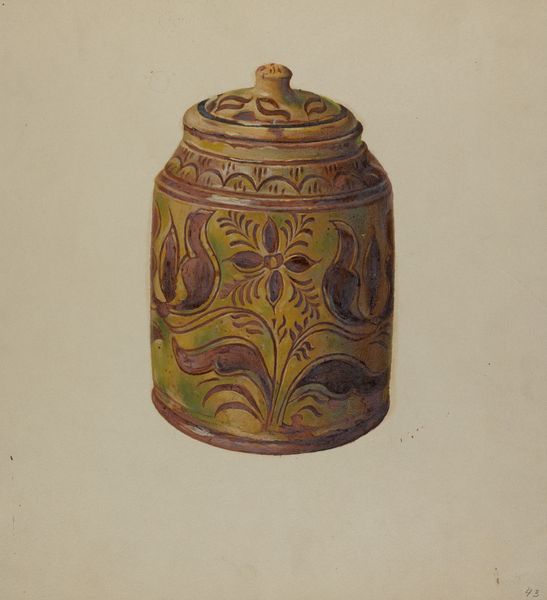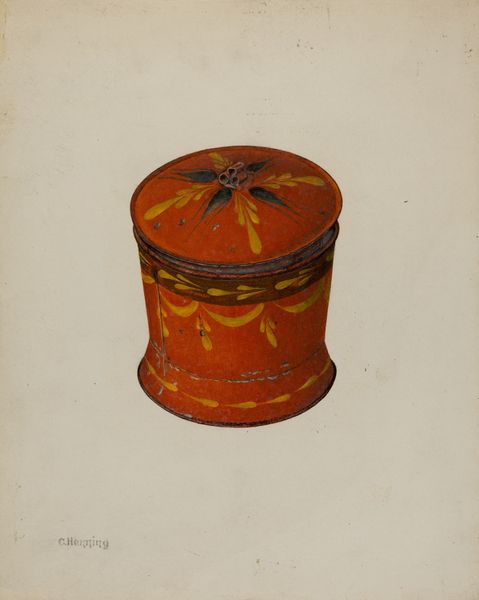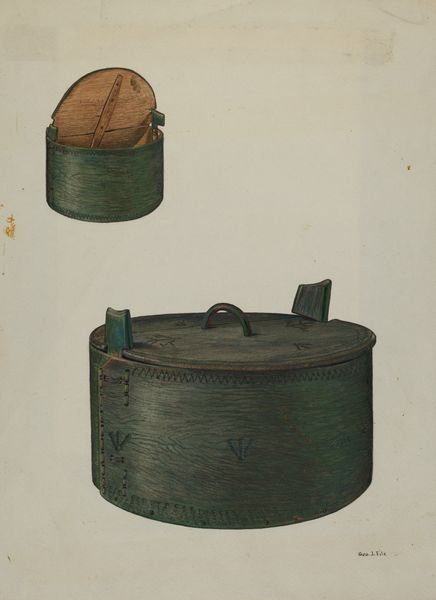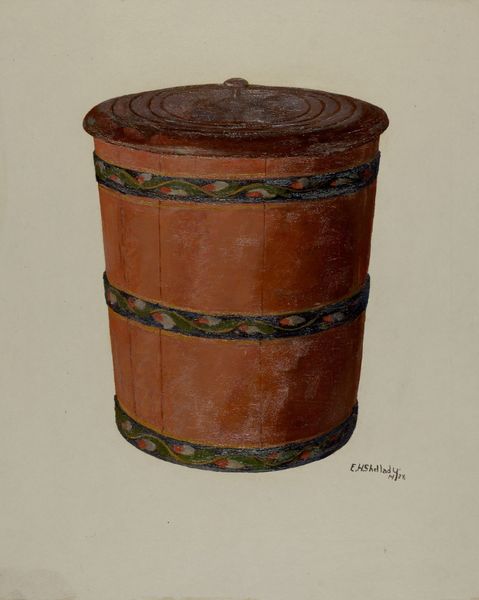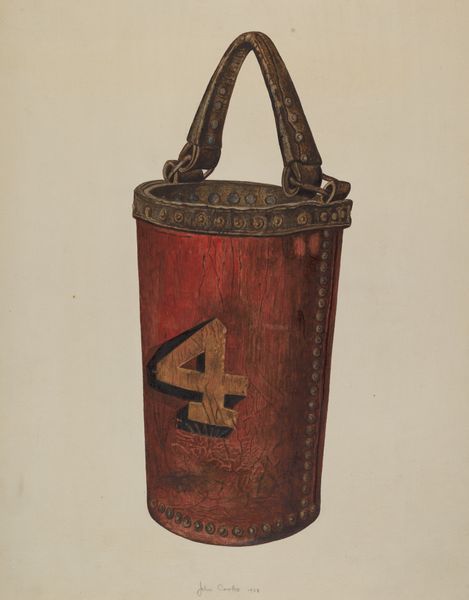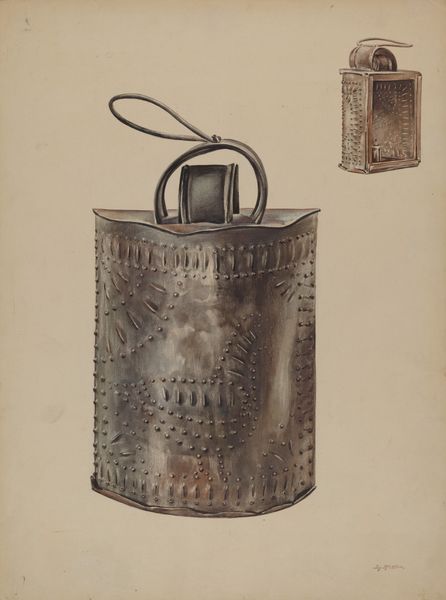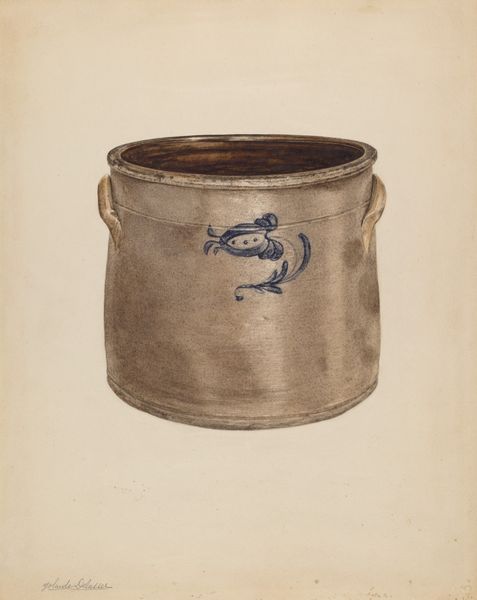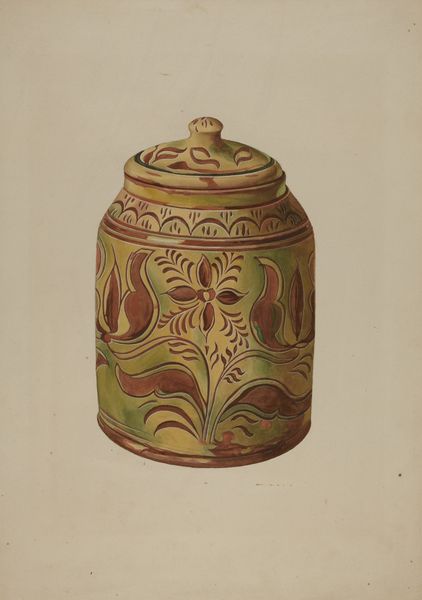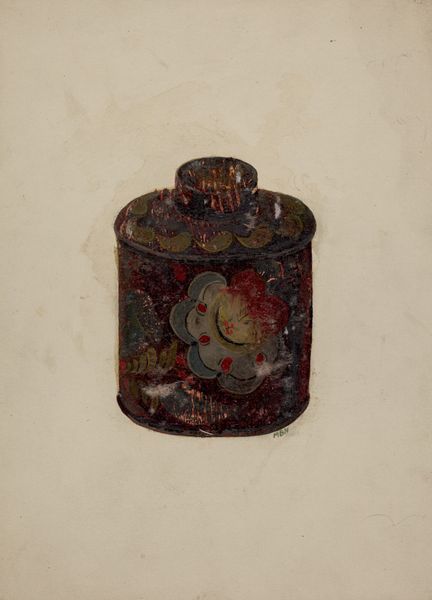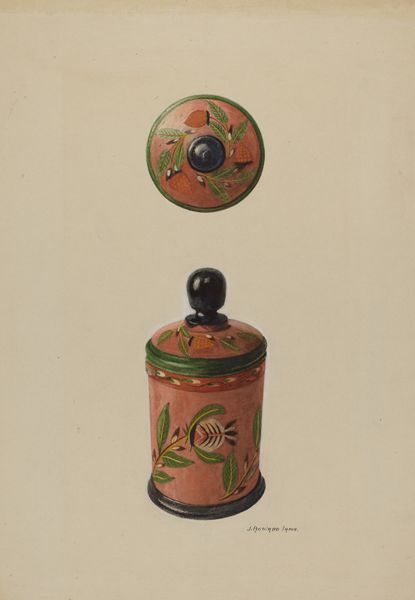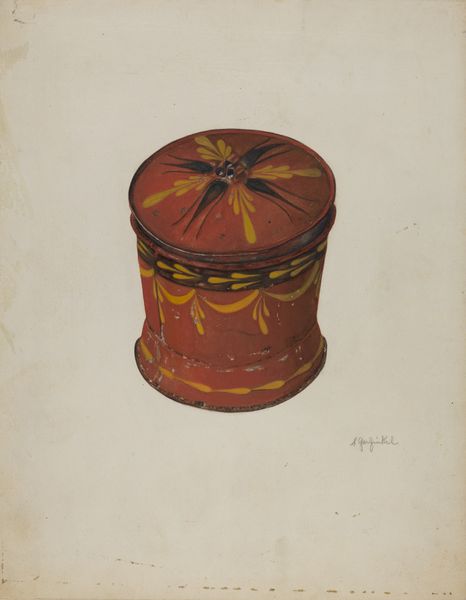
drawing, watercolor
#
drawing
#
watercolor
#
coloured pencil
#
watercolour illustration
#
decorative-art
Dimensions: overall: 27.6 x 21.6 cm (10 7/8 x 8 1/2 in.) Original IAD Object: 4 3/8" in diameter; 3 1/2" high
Copyright: National Gallery of Art: CC0 1.0
Curator: Here we have Charles Henning’s "Toleware Box," created around 1941. The artist employed drawing and watercolor, and possibly colored pencil, to depict the object. Editor: It’s charming! It immediately gives me a rustic, folky feeling. The color palette, though somewhat muted, is quite appealing and the box shape gives it a pleasing geometry, an eye catching lid. Curator: Precisely! Let’s delve into the social and material context of toleware. These decorative tin-painted objects were quite popular, serving practical purposes within households. The process involved skilled artisans transforming mass-produced tin into functional art. Considering this was made around 1941, it's fascinating to consider what kinds of everyday purposes this might have fulfilled. Editor: I agree; now zooming in, the composition of the illustration intrigues me, though the representation isn't precisely photorealistic. Look at the layering of forms and how Henning uses a limited color range to depict texture and create a visual balance. How would you assess his success at rendering form and space through those illustrative means? Curator: The tension lies precisely there – it is a rendition rather than reality. His goal wasn't strict realism, but rather to celebrate a familiar household item. He puts into sharp relief both the artistic embellishment of everyday materials, and to record this mode of design that reflected both industry and home life. Editor: Yes, and you’re reminding me that art, even applied art like this, always presents a chosen reality. There is always a representational agenda that reflects more than merely "recording" what is "out there". It shows us how domestic life in this particular area may have existed back then. Curator: This is a perfect example to remember how craft and decorative objects fit into the larger history of art and industrial design. The production of these pieces mirrors industrial activity, in conjunction with personalized creativity, that defined this period. Editor: I agree entirely. Seeing the work through that lens opens up a richer appreciation for its value, well beyond aesthetics. The piece prompts us to rethink the art that's integrated into our everyday routines and spaces.
Comments
No comments
Be the first to comment and join the conversation on the ultimate creative platform.
